Intercontinental ballistic missiles in Russia's strategic nuclear forces
March 11 held the next enlarged meeting of the State Duma Committee on Defense, which was attended by Defense Minister Sergei Shoigu. He revealed the main results of the activities of the military department in the period from 2012 of the year, including those showing the current development of the SNF. Thus, in the 2012-18 years, the Russian army received the 109 intercontinental ballistic missiles RS-24 Yars, as well as the 108 ICBMs for submarines. Together with them were built and carriers of different types.
The delivery of new ICBMs and various equipment made it possible to maintain the potential of the SNF at the required level, and also affected their general condition. So, in the Strategic Missile Forces the share of modern weapons and equipment has reached 82%. The average share of novelties in the Navy (without separate accounting of carriers of nuclear weapons) - 62,3%, in aerospace forces - 74%. According to current plans, up to 2020, the total share of modern designs in the army should be reduced to 70%. As we see, some structures of the army have already coped with this task, while others are still lagging behind.
Historical reference
For a better understanding of the development of the SNF, namely the grouping of land-based and sea-based ICBMs, we should recall how such structures looked a few years ago. Since the Russian Ministry of Defense does not always publish detailed data on strategic forces, let us turn to available foreign sources. First of all, consider the IISS The Military Balance 2013 handbook, which reflects the state of the armies in the previous 2012 year.
According to IISS, in 2012, the Russian Strategic Missile Forces had 3 rocket armies in which 313 intercontinental ballistic missiles were on duty. At that time, the most massive complex was the RT-2PM "Topol" - 120 units in a mobile version. There were 78 systems PT-2PM2 Topol-M (60 in mines and 18 on mobile installations). The presence of 54 heavy P-36М and 40 UR-100H UTTH missiles. The result of the recently launched shipments was the 21 watch of the latest RS-24 Yars rocket.
As part of the Navy in 2012, eight strategic submarine missile-carriers of two types served (Ave. 667BDR "Kalmar" and 667BDRM "Dolphin"). One boat, a representative of the 941 "Shark" project was in reserve, the lead ship of the 955 Ave. "Borey" was tested. The Military Balance and other sources do not provide accurate data on the number of SLBMs on duty in 2012. However, it can be calculated that SSBN Ave. 667BDRs could carry up to 48 Р-29Р missiles, and representatives of Ave 667БДРМ ensured the deployment up to 96 of Р-29РМ / РМУ2 / РМУ2.1 products.
In the spring of 2013, the current data on the implementation of the terms of the Strategic Offensive Arms Treaty START-3 was published. As of 1 in March of 2013, the Russian strategic nuclear forces had 492 deployed nuclear weapons carriers; total number of carriers is 900. 1480 nuclear warheads were deployed. However, the published data on SNV-3 does not reveal the exact composition of the SNF and leave questions of a different kind.
The development of the Russian strategic nuclear forces is vividly shown by the directory of The Military Balance 2018. It follows from it that in the last few years missiles of already known types remained in service with the Strategic Missile Forces and the Navy, but their proportions in the general grouping have changed. The proportion of old samples has declined as they give way to modern ones. In addition, new ICBMs and their carriers were put into service.
SSB K-84 "Yekaterinburg" pr. 667BDRM "Dolphin". Photo of the Ministry of Defense of the Russian Federation / mil.ru
According to the IISS, at the beginning of last year, the 313 rocket of five former types was still on duty at the Strategic Missile Forces. The number of systems RT-2PM reduced to 63. The number of "Topol-M" has not changed - still in the mines were 60 missiles and 18 used on PGRK. The MBRs of the P-36M type were in the number of 46 units, the number of UR-100Н УТТХ decreased to 30. At the same time, in five to six years, the number of Yars products has increased by several times. 84 of such ICBMs on mobile platforms and 12 in silos were on duty.
The submarine component of the SNF to 2018 year increased slightly. "Squids" and "Dolphins" remained in the same quantity, but three Borei-type SSBNs were put into operation. Each such submarine is capable of carrying an X-NUMX ICBM P-16 "Bulava". As before, accurate data on the real number of existing and deployed SLBMs was not given.
Information is available on the progress of the implementation of the START-3. So, September 1 2018, Russia had 790 nuclear weapons carriers, of which 501 was deployed. The total number of deployed warheads - 1561. As before, publishing data on the implementation of the contract, the parties did not go into details.
Fluctuations in numbers
It should be noted that the number of all types of ICBMs on duty, as well as the number of deployed warheads are constantly changing. First of all, it is connected with the conduct of combat training launches. To implement such measures, a weight simulator of a real combat unit is installed on the rocket, which reduces the number of deployed combat units. The launch itself, respectively, reduces the number of deployed missiles - before being placed on the launcher of a new product.
According to various sources, in the period from 2012 to 2019, about two dozen launches of the RT-2PM Topol missiles of various modifications took place. At the same time, we had only two launches of Topol-M. Rockets "Yars" in recent years, flew eight times. Also conducted 13 missile launches submarine "Bulava". Older product launches were launched.
Regular execution of combat training launches in a known manner affects the number of missiles in the strategic nuclear forces. However, such results directly depend on the type of product. The number of missiles of old models, long out of production, with each launch decreases, although a certain stock allows them to continue operation. This applies to complexes UR-100Н, Р-36М, "Topol" and "Topol-M", as well as to old products of the P-29 family. At the same time, modern PC-24 “Yars” and P-30 “Bulava” missiles are being produced. In their case, each launch is followed by the delivery of new serial products, which leads to a gradual increase in the available quantity of weapons.
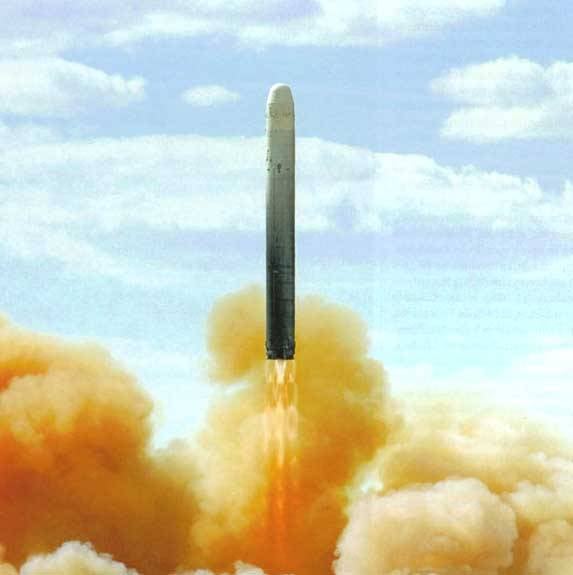
Run UR-100H. Photo Rbase.new-factoria.ru
It should recall the recent statements by the Minister of Defense. S. Shoigu pointed out that in the 2012-19 years, 109 ICBMs of the “Yars” type entered the strategic rocket forces. The fleet was given 108 products, but their type was not named. Apparently, we are talking about the simultaneous production and supply of SLBMs of the types P-29RMU2.1 and P-30. However, the exact composition of the latest deliveries and the share of different products in total volumes remain unknown.
Plans for the future
In the future, it is expected that the RS-28 Sarmat will be put into service, which will have to replace the outdated UR-100H and P-36М. With the beginning of the supply of "Sarmat" the number of old products will be reduced, but in general the ICBM group of the heavy class will not suffer or even increase.
One of the directions of development of the Strategic Missile Forces is the introduction of so-called. cruise planning combat units. Special hypersonic aircraft with a combat load of the Avangard type are currently proposed to be used with the UR-100Н missiles, and in the future their carriers will be the newest PC-28. Serial production and mass operation of the Avangard will likely reduce the number of deployed warheads, but at the same time will give the Strategic Missile Forces new opportunities.
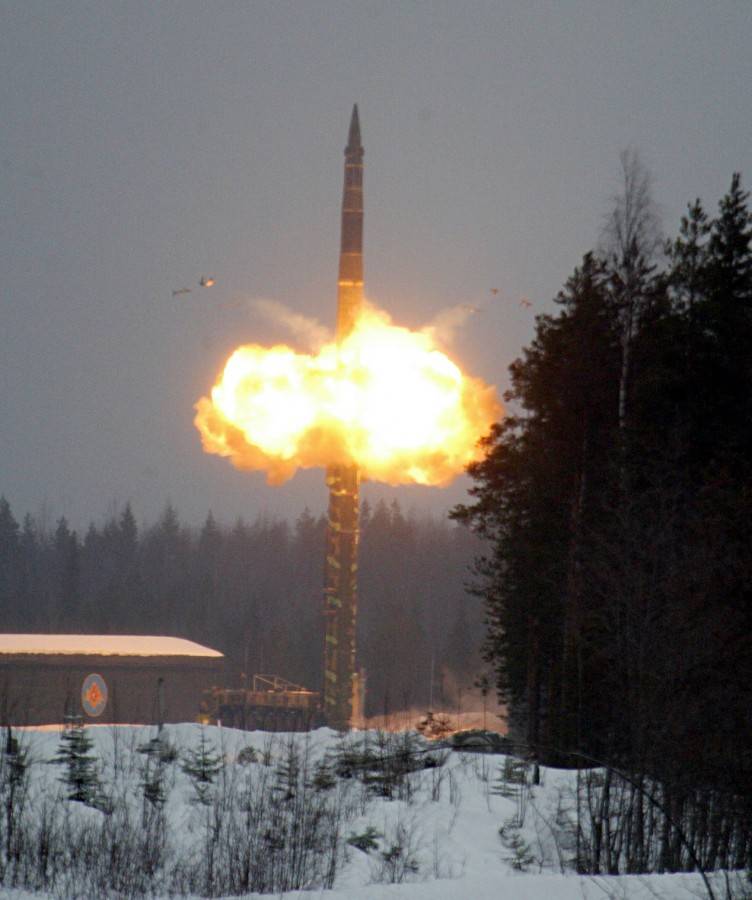
Start of ICBM RT-2PM. Photo of the Strategic Missile Forces / pressa-rvsn.livejournal.com
The further development of the naval component of the SNF is connected with the Bulava R-30 missiles. However, missile weapon carriers have a key role in this. The construction of the strategic submarine cruisers of the 955 Pr. Borey continues and leads to the desired results. Since the end of 2014, the Navy has three such ships - a total of 48 launchers for the Bulaw. This year is expected to hand over two more SSBNs capable of carrying another 32 SLBM. Then 3-5 “Boreev” with 16 launchers on each should appear. At the same time will have to write off several ships of old projects. So, in the coming years, three boats of the 667BDR Ave.
Despite the gradual spending of disrupted missiles and the decommissioning of some of their carriers, Russia's strategic nuclear forces retain the necessary potential and meet the requirements. The three components of the SNF can ensure the rapid deployment of the necessary or allowable number of carriers and warheads. It is also possible to change the ratio of deployed carriers and warheads in different components.
It should be borne in mind that the current and further development of the strategic nuclear forces is still associated with the START-3 agreement. In accordance with this agreement, Russia has the right to have 800 carriers of nuclear weapons, of which 700 may be in deployed condition. The number of deployed warheads is limited to 1550 units. While the treaty is in force, the Russian strategic nuclear forces have to take it into account when planning.
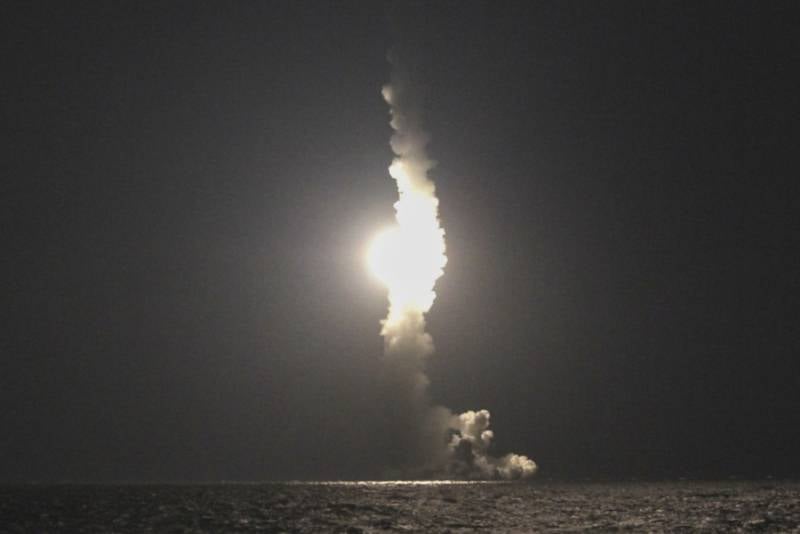
Launch of the Bulava submarine-launched ballistic missile with the Vladimir Monomakh nuclear submarine. Photo of the Ministry of Defense of the Russian Federation / mil.ru
It should be noted that the capabilities of the existing missiles and carriers in theory allow us to deploy a large number of warheads and even exceed the limitations of START-3 even several times. However, our country does not violate international agreements, and besides, such a step would simply be inexpedient from the point of view of the economy and current tasks.
The effect of the START-3 agreement ends in February 2021. The replacement is being worked out for him, but this issue is not resolved too quickly. There is some likelihood that after the expiration of these periods offensive weapons will not temporarily be regulated by a new treaty. In this case, the Russian strategic nuclear forces can be useful existing potential in terms of the deployment of additional carriers and warheads.
Some conclusions
Currently, Russia's strategic nuclear forces can simultaneously hold on duty up to the 450-500 intercontinental ballistic missiles of land and sea bases. The potential number of warheads that can carry all the available missiles exceeds several thousand. Naturally, under the conditions of limitations of START-3 and taking into account its capabilities, Russia does not fully realize this potential. ICBMs of all classes and types play a leading role in the strategic nuclear forces, but at the same time leave work for the air components.
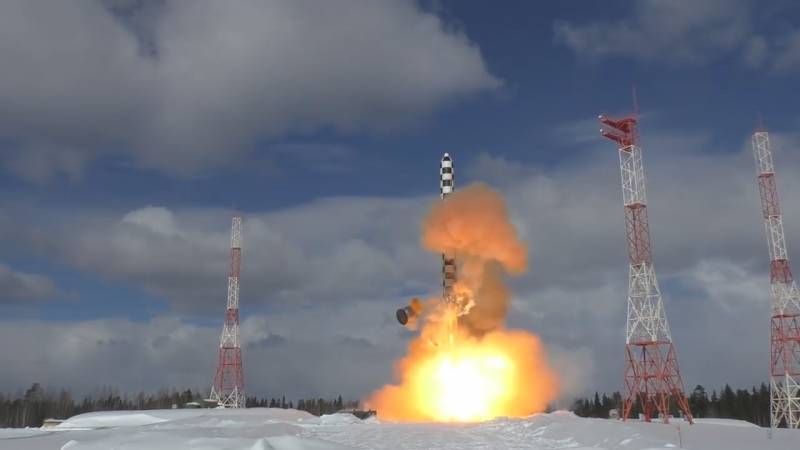
Throw test missiles RS-28 "Sarmat". Photo of the Ministry of Defense of the Russian Federation / mil.ru
It is not difficult to notice that in recent decades there has been a systematic and continuous development of the field of ICBMs. This development did not stop even in difficult periods, which only slowed down its course. Now these processes are implemented in the form of mass production and supply of new RS-24 “Yars” and P-30 “Bulava” missiles. From 2012 to the present, the armed forces have received almost 220 products of these types. The development of new ICBMs and combat units for them, including fundamentally new ones, is also being carried out.
Some obsolete missiles are planned for decommissioning for the future, and they will immediately be able to be replaced by modern samples. First of all, we are talking about heavy UR-100Н and Р-36М, which is replaced by "Sarmat". In the field of ground-based light ICBMs, the future is connected with the Yars missiles, which have already become the main ones in their class and then only strengthen their positions. Similarly, the arsenals of submarine forces of the Navy are being updated, but in this area the process of building new carriers for SLBMs plays a crucial role.
It is obvious that in the future, strategic nuclear forces will retain a high priority, while various types of ICBMs will remain their key component. From this we can draw several conclusions. First of all, you can not worry about the security of the country. The SNF, possessing various armaments, will be able to cope with the task of strategic deterrence of potential adversaries. And besides, it can be expected that in the foreseeable future, the leadership of the Ministry of Defense will again talk about the supply of strategic weapons, and it will again be about hundreds of serial missiles in a few years.
Based on:
http://mil.ru/
https://state.gov/
https://rt.com/
https://iz.ru/
http://globalsecurity.org/
http://rbase.new-factoria.ru/
IISS The Military Balance 2012
IISS The Military Balance 2018
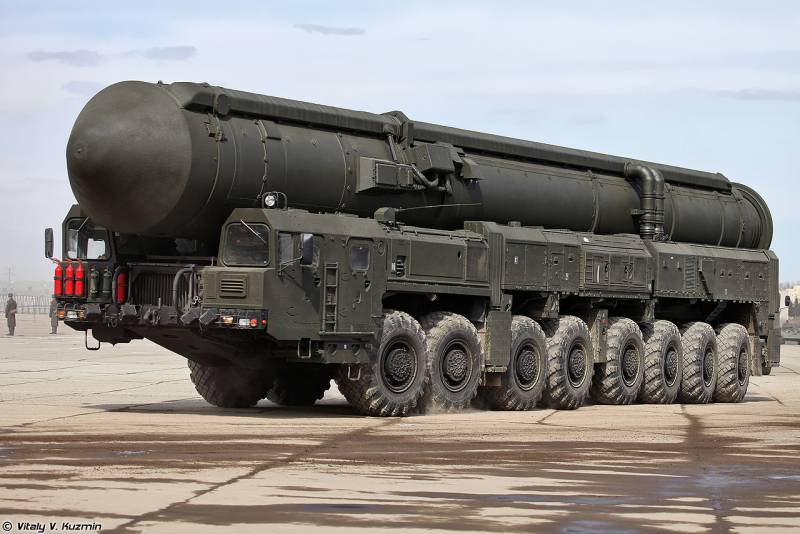
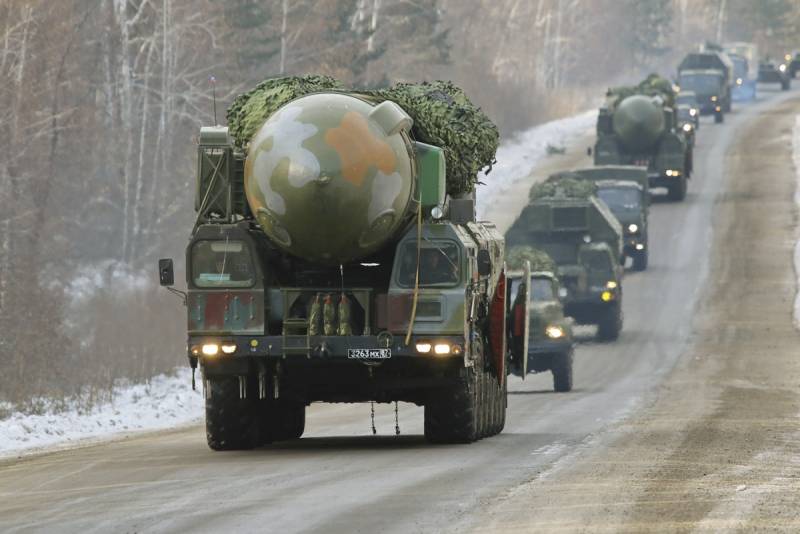
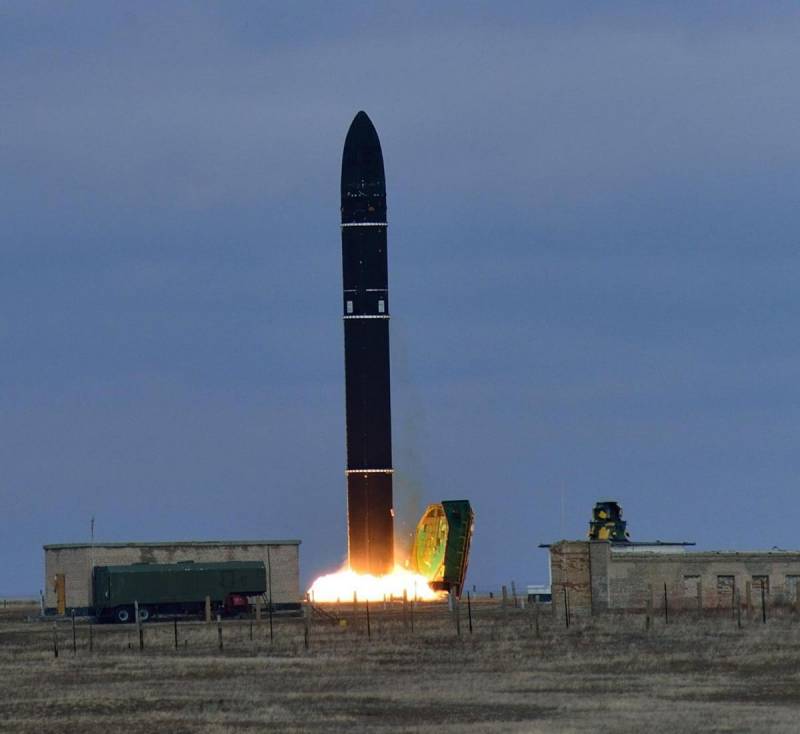
Information